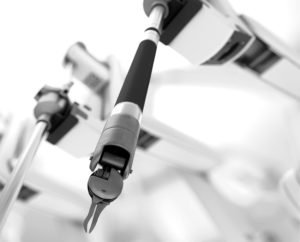How Integrating PLM with a Component Database Reduces Open Heart Surgery Bloopers
 As we learned last week, the benefit of integrating quality within product lifecycle management (PLM) is clear. But if you are wondering what other tools and strategies can help reduce an increasingly broader array of risks and pains that afflict the medical device industry, then this blog post is just what the doctor ordered.
As we learned last week, the benefit of integrating quality within product lifecycle management (PLM) is clear. But if you are wondering what other tools and strategies can help reduce an increasingly broader array of risks and pains that afflict the medical device industry, then this blog post is just what the doctor ordered.
You know the expression that it takes a village to raise a child. Well, it can take a robust product development solution and ecosystem of integration solution partners to reduce the potential risks that ever-changing REACH and RoHS can bring.
Arena allows for automated integration with partner solutions that eliminate errors caused by manual data entry and streamline the transfer of your product record to downstream systems for accurate design, change control, and manufacturing with precision. Arena’s partners, include ERP, engineering design, business expert and insight, technology, reselling, quality assurance, and component lifecycle and—as we discuss in this blog—compliance database partners.
A component database is the only realistic way to comply with ever-changing compliance mandates and frequent changes to both the REACH and RoHS hit lists. Especially because there’s no doubt that today, environmental regulations are now an integral part of medical device product design.
A component database dramatically improves bill of materials (BOM) management. It provides instant access to component documentation, accurately forecasts components at risk, and offers an in-depth look into electronic component lifecycle statuses, multi-sourcing, available inventory, and environmental compliance data. When integrated into a PLM system, a component search engine can help medical device OEMs dramatically reduce risks across the supply chain.
Choosing the right part at the right time is one of the most important aspects of product design. Unfortunately, many medical device or high tech companies don’t utilize a standardized method for selecting electronic parts. And relying on archaic management tools like Microsoft Excel to manually manage product data cause medical device companies to make incorrect selections, as well as waste time.
“Manually searching for and selecting components is time-consuming and error-prone. It can result in incorrect or incomplete part numbers, missing information on various attributes and a host of other inconveniences and errors,” said Amanda Martin, marketing manager of SiliconExpert, a leading electronic component database.
Part obsolescence is an ever-present risk to medical device companies. Even parts must die someday—bless their hearts. Managing part data in-house makes it difficult to plan for obsolescence issues, as forecasts are often based on data that is inaccurate or incomplete. Being caught unaware on a part going EOL can be catastrophic, causing costs to skyrocket and delayed shipments. Additionally, faulty manual risk management processes caused by a bad part can lead to several medical device nightmare scenarios.
“Imagine you have a device that you’re expecting to last for ten years—it’s working well in the market, its components are readily available, and suddenly one part goes obsolete. Because of one component, your entire product is now at risk,” said Martin. “In an absolute worst case, your company might need to spend millions of dollars to redesign because of one component. Our software and tools aim to mitigate and avoid this type of risk.” By subscribing to an electronic component database and proactively assessing components with complete data knowledge, the service ‘cleanses’ components and provides visibility into their potential risk of becoming unavailable or non-compliant.
Another issue medical device companies face is a growing plague of counterfeit parts, which if innocently included in the design, can sabotage a device. No company wants to hear that its medical device failed while performing surgery or that its medical scanner was not able to detect cancer—after making high-spend advertising claims that it does.
To battle counterfeit risks, some database providers have developed algorithms—similar to the formulas devised to forecast EOL components—that examine how long a suspect part has been on the market. The system can also detect whether any counterfeit reports have been made on the component in the past, and verify how many distributors still carry inventory on this product.
“Usually counterfeiters will go after parts that are on the gray market—parts no longer being carried by authorized distributors,” explained Martin. “Counterfeiters know companies are in a panic to get a hold of these parts. Yes, there are tests and measurements and methods in the market today, but you are not going to be able to test every single component, so there is always a risk.”
When the electronic component database like Octopart or SiliconExpert is integrated into a PLM or quality management software to manage the BOM and associated engineering change orders, medical device engineers can validate and assess all parts upfront with cross-references, lifecycle, parametric, obsolescence forecasts, regulation compliance, and inventory data so as to swiftly assess their legitimacy for inclusion into the NPD build.
Michael Jordan had Scottie Pippin to help the Bulls win 6 NBA championships (it could have been at least three more except for greedy ownership); likewise, Arena has several great Scottie Pippin partners, such as Silicon Expert, to form a product development dream solution.


